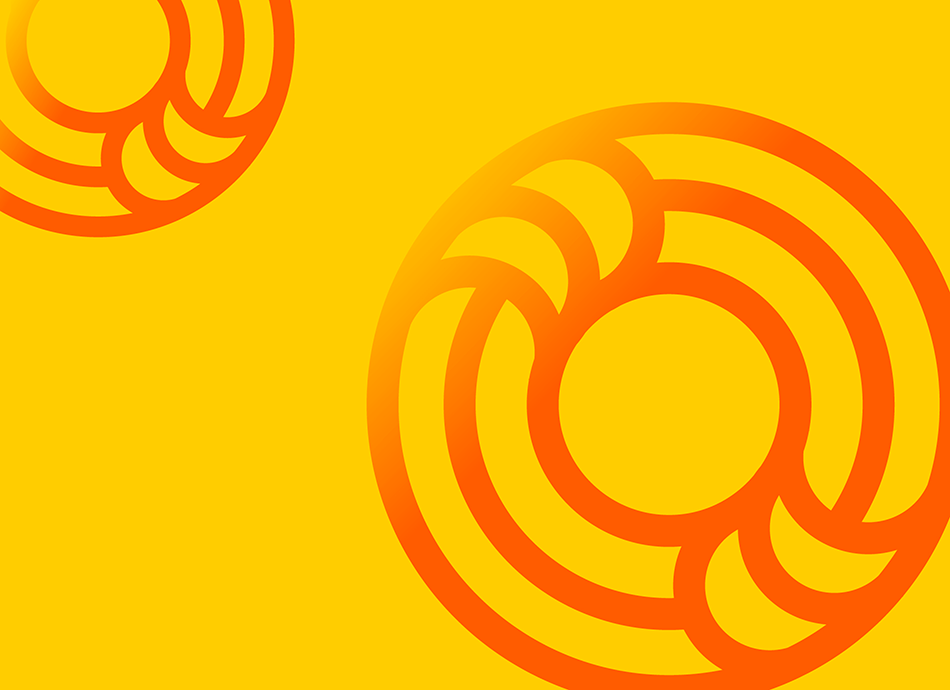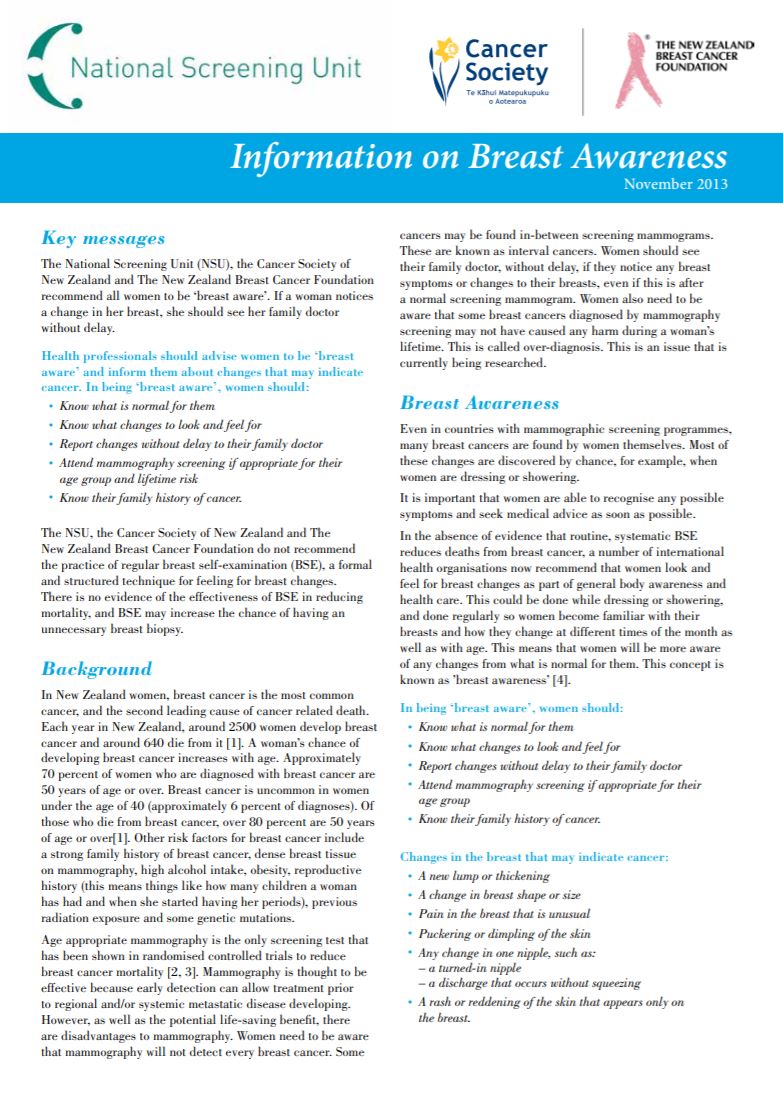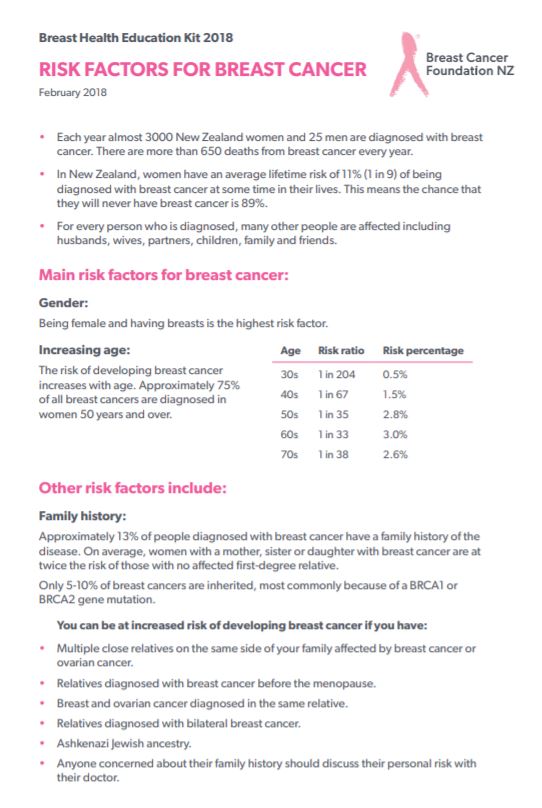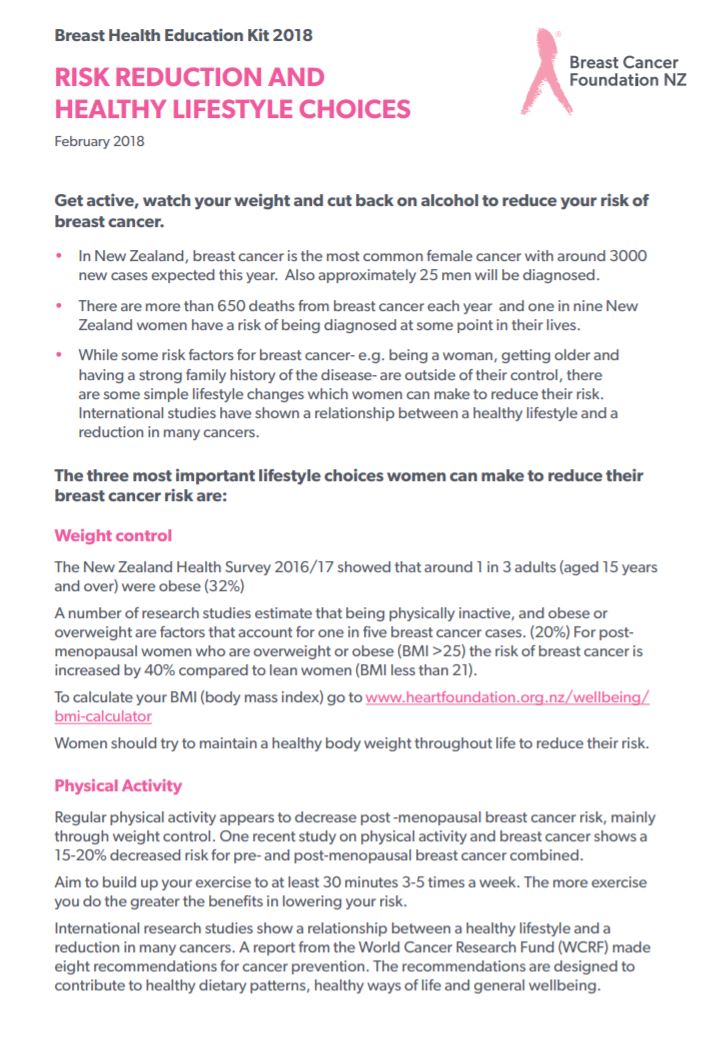Breast self-examination apps are no longer recommended.
- There are a number of apps that show you how to do breast self-checks or examine your breasts. These are often called breast self-examination apps. Many apps use different techniques, eg, diagrams and images, animation and interactive screens.
- Breast self-examination apps are no longer recommended. The guidelines have shifted to “breast-awareness” over regular breast examination. Breast-awareness involves knowing what your breasts look like and how they ordinarily feel so that you can easily identify any changes.
Breast self-examination (BSE) is the formal and structured technique for feeling for breast changes, at regular intervals, eg, every month.
- This practice is not recommended because the evidence shows that it doesn't reduce breast cancer-related deaths.
- It's not entirely safe either, as it increases the risk of having an unnecessary breast biopsy and causing anxiety.
- There are a number of apps that show you how to do breast self-checks or examine your breasts. These are often called breast self-examination apps. Many apps use different techniques, including diagrams and images, animation and interactive screens. These apps are no longer recommended.
Instead, it's better for women to be ‘breast aware'. This means you should:
- be familiar with the usual look and feel of your breasts and know what is normal for you
- know what breast changes to look and feel for
- be "sensibly alert" to changes in your breasts, and see your healthcare provider if you notice any changes
- have a mammogram every 2 years if you are 45 to 69 years of age (see breast screening)
- know your family history of cancer.
It's important for you to know what your breasts and nipples look like and how they ordinarily feel before and after your period, so that you can easily identify any changes. This can be done while dressing or showering. Women of all ages should be familiar with their breasts, but it becomes more important as you get older because the risk of breast cancer increases with age. Read more about breast lumps and changes.






